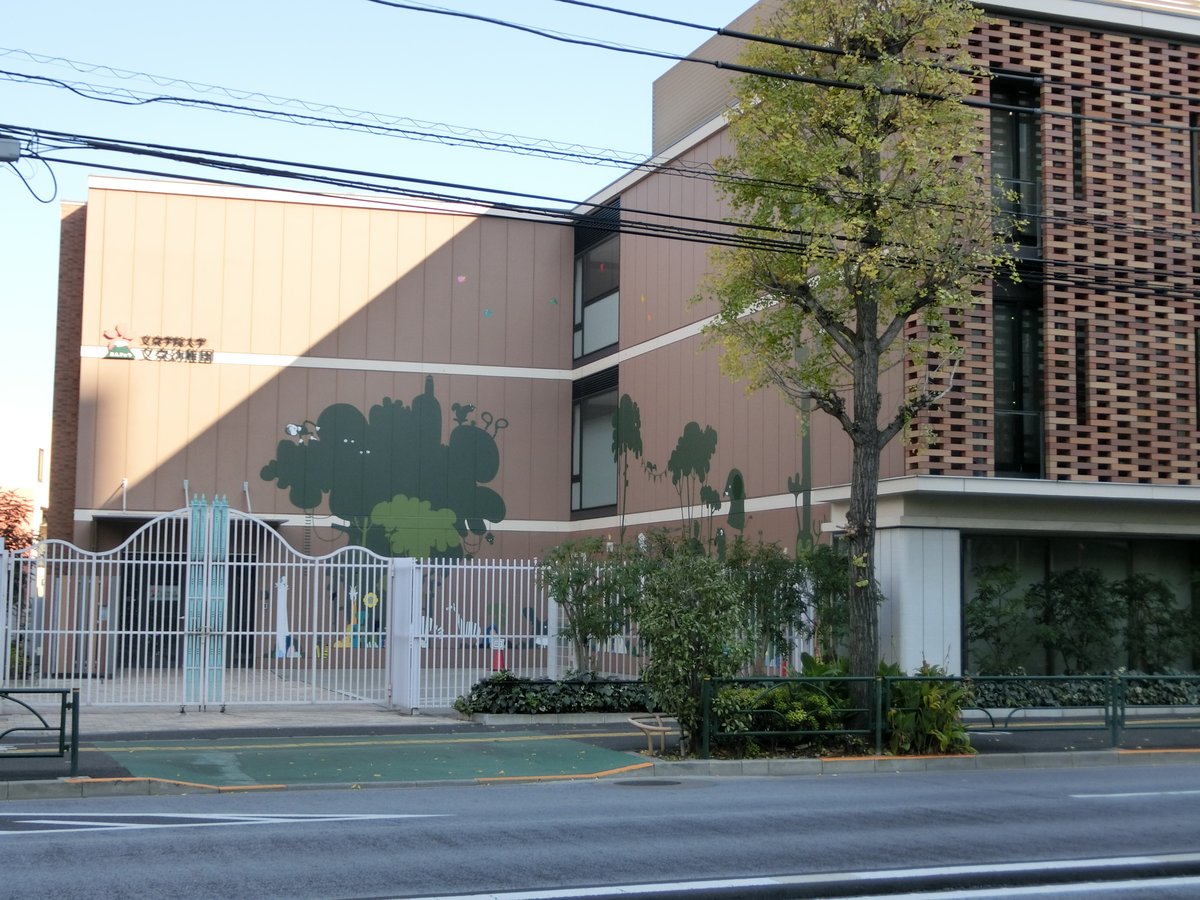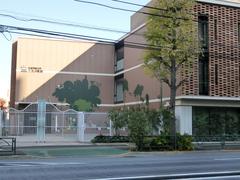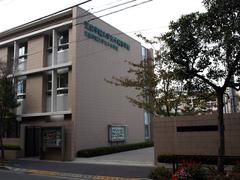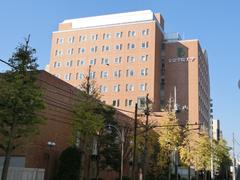
Bunkyo Gakuin University Visiting Guide: Tokyo Historical Site Information
Date: 14/06/2025
Introduction: Bunkyo Gakuin University – History and Significance
Located in the culturally vibrant Bunkyo Ward of Tokyo, Bunkyo Gakuin University is a distinguished institution with a legacy rooted in the advancement of women’s education in Japan. Established in 1924 as Hongo Women’s Academy by Ishiko Shimada, the university has evolved over nearly 100 years into a modern coeducational institution that upholds the ideals of independence, coexistence, and intellectual growth (reedjapan.org; wikipedia). Today, Bunkyo Gakuin University is not only a center for academic excellence but also a living testament to Japan’s educational and societal progress.
This guide provides essential information for prospective visitors, including access details, visiting hours, ticketing, guided tours, and highlights of the university’s notable facilities such as the Ishiko Shimada Memorial Hall and tranquil campus gardens. It also explores the broader Bunkyo Ward, renowned for its historic sites, traditional gardens, and proximity to major Tokyo attractions, ensuring visitors enjoy a well-rounded, culturally immersive experience (bgu.ac.jp; tokyotourists.com; flipjapanguide.com).
Whether you are a history enthusiast, prospective student, or traveler eager to explore Tokyo’s educational heritage, this comprehensive guide will help you plan and enrich your visit to Bunkyo Gakuin University and its vibrant surroundings (japanrar.com).
Contents
- Historical Background and Evolution
- Visiting Hours and Tickets
- Campus Locations and Access
- Hongo Campus
- Fujimino Campus
- Academic Structure and Notable Facilities
- International Exchange and Student Life
- Visitor Experience and Tips
- Getting There and Campus Highlights
- Nearby Attractions in Bunkyo Ward
- Local Events and Festivals
- Dining and Accommodation
- Practical Tips
- Frequently Asked Questions (FAQ)
- Discover Bunkyo Ward: Visiting Hours, Tickets, and Must-See Tokyo Historical Sites
- Academic and Cultural Landscape
- Top Historical Sites and Visiting Information
- Gardens and Green Spaces
- Modern Attractions: Tokyo Dome City
- Museums and Galleries
- Exploring Bunkyo’s Famous Slopes
- Dining, Shopping, and Student Life
- Access and Transportation
- Seasonal Events and Festivals
- Practical Tips for Visitors
- FAQ
- Explore More and Stay Connected
- Cultural and Academic Significance
Discover Bunkyo Gakuin University: A Must-Visit Historical and Cultural Site in Tokyo
Bunkyo Gakuin University stands as a symbol of Japan’s progressive educational reforms. Its transformation from a pioneering women’s academy to a coeducational university mirrors the evolution of Japanese society. The campus offers a blend of historical ambiance, modern academic life, and cultural experiences, making it a meaningful destination for visitors of all backgrounds.
Visiting Hours and Access
- Campus Hours: Open to the public from 9:00 AM to 5:00 PM on weekdays. Check the official website for updates related to academic schedules or special events.
- Admission: Free to enter general campus areas. Some facilities or events may require prior registration or tickets.
How to Get There
- By Train: The nearest station is Korakuen Station (Tokyo Metro Marunouchi and Namboku Lines), about a 10-minute walk from campus.
- By Bus: Multiple local buses serve Bunkyo Ward; consult local transit maps for details.
- Accessibility: The campus is wheelchair accessible, with ramps and elevators in major buildings.
Guided Tours and Events
Guided tours are available during open campus days in spring and autumn, providing insights into the university’s rich heritage and academic environment. Public lectures, exhibitions, and cultural events are hosted throughout the year—refer to the visitor information page for schedules and registration details.
Campus Highlights
- Historic Architecture: Discover buildings that showcase the university’s evolution from its origins in women’s education.
- Campus Gardens: Enjoy peaceful gardens ideal for photography and relaxation.
- Student Art Exhibitions: View creative works from the university’s faculties, particularly Foreign Studies and Human Studies.
Nearby Attractions
- Koishikawa Korakuen Garden: A celebrated Japanese garden and one of Tokyo’s oldest.
- The University of Tokyo: Japan’s premier university, with a historic campus and museums.
- Tokyo Dome City: Popular for entertainment, shopping, and dining.
Educational Philosophy
Bunkyo Gakuin University emphasizes independence, coexistence, and global engagement, fostering a vibrant community of students and international scholars. Visitors are welcome to engage with student clubs and community projects, deepening their understanding of Japanese academic and cultural life.
Visiting Bunkyo Gakuin University: Hours, Tickets, Campus Guide & Nearby Attractions
Historical Background and Evolution
Founded in 1924 as Hongo Women’s Academy, Bunkyo Gakuin University has continually expanded its mission and academic offerings. Key milestones include the establishment of the Bunkyo Gakuen Girls’ Junior High School (1947), Institute of Medical Technology for Women (1959), and the Women’s College (1964). In 1991, the university introduced Japan’s first Faculty of Business Administration at a women’s university, and in 2005, it became fully coeducational (reedjapan.org; bgu.ac.jp; wikipedia). The university celebrated its centennial in 2024, marking a century of academic excellence and community service.
Visiting Hours and Tickets
- Campus Grounds: 9:00 AM – 5:00 PM (Monday to Friday)
- Ishiko Shimada Memorial Hall: Open to the public only during scheduled events (see university calendar)
- Admission: No fee for general campus entry. Event tickets may be required for specific venues or lectures.
Campus Locations and Access
Hongo Campus
- Address: 1-19-1 Mukogaoka, Bunkyo-ku, Tokyo 113-8668
- Access:
- Directly in front of Exit 2, Todaimae Station (Tokyo Metro Namboku Line)
- 10-minute walk from Hakusan Station (Toei Line) or Nezu Station (Chiyoda Line)
- The academic neighborhood includes the University of Tokyo and other institutions, creating a lively intellectual setting (tokyo-tokyo.com).
Fujimino Campus
- Location: Fujimino, Saitama (approx. 30 min. from central Tokyo)
- Access: Tobu Tojo Line to Fujimino Station, then 7 minutes by school bus (bgu.ac.jp).
Academic Structure and Notable Facilities
- Faculties: Business Administration, Foreign Studies, Human Studies, Health Science Technology (tokyo-tokyo.com).
- Key Facilities:
- Ishiko Shimada Memorial Hall: 834-seat hall for ceremonies and cultural events (bgu.ac.jp)
- Library and Multimedia Center: Over 140,000 volumes, multi-language resources
- Chat Lounge: Language learning sessions in English, Chinese, French, Korean, and Spanish (wikipedia)
- International Programs Office: Oversees study abroad and exchange initiatives
International Exchange and Student Life
Bunkyo Gakuin University partners with global institutions, including Saint John’s University (USA), and universities in Malaysia, Canada, China, New Zealand, Australia, and the UK (wikipedia). The university welcomes international students, with dedicated dormitory facilities near the Hongo Campus. Student life is enriched by Bunkyo Ward’s literary and cultural heritage, numerous festivals, and proximity to Tokyo’s attractions (japanrar.com).
Visitor Experience and Tips
- Getting There:
- Tokyo Metro Namboku Line to Todaimae Station, Exit 2 for Hongo Campus
- 10-minute walk from Hakusan or Nezu Stations
- Campus Highlights:
- Attend public events at Memorial Hall (check calendar)
- Visit library/multimedia center during open days
- Observe or join language sessions in the Chat Lounge (contact ahead)
- Nearby Attractions:
- Koishikawa Korakuen Gardens (flipjapanguide.com)
- Rikugien Garden (cherry blossoms, autumn colors)
- Nezu Shrine (azalea festival in spring) (tokyotourists.com)
- Tokyo Dome City (entertainment, shopping) (tokyotourists.com)
- Local Events:
- Bunkyo Azalea Festival (spring, Nezu Shrine)
- Hydrangea Festival (June, Hakusan Shrine) (jw-webmagazine.com)
- Dining and Accommodation:
- Range from traditional eateries to modern cafés and hotels near Tokyo Dome (tokyotourists.com)
- Practical Tips:
- English is available in international program areas; basic Japanese is helpful
- Campus is compact and walkable (japanrar.com)
- Arrange tours/events in advance (bgu.ac.jp)
- For the latest updates, follow the official Twitter and YouTube channel
Frequently Asked Questions (FAQ)
Q: What are the campus visiting hours?
A: 9:00 AM – 5:00 PM, Monday to Friday. Event access varies by schedule.
Q: Is there an entry fee?
A: No, campus entry is free. Some events require tickets.
Q: Can I join a guided tour?
A: Group tours can be arranged in advance; otherwise, tours are not regularly scheduled.
Q: What are nearby sites worth visiting?
A: Koishikawa Korakuen, Rikugien Garden, Nezu Shrine, Tokyo Dome City.
Discover Bunkyo Ward: Visiting Hours, Tickets, and Must-See Tokyo Historical Sites
Introduction
Bunkyo Ward, known as Tokyo’s “Capital of Culture,” is a vibrant district where tradition and modernity meet. Home to 15 universities and numerous historic sites, Bunkyo is an ideal base for exploring Tokyo’s intellectual and cultural heart (Wikivoyage).
Top Historical Sites and Visitor Information
-
Yushima Seido (Confucian Temple):
- 9:00 AM – 5:00 PM, free entry
- Noted for black lacquered architecture and role as an Edo-period learning center
-
Nezu Shrine:
- 6:00 AM – 7:00 PM (varies by season), free entry
- Famous for azalea festival (over 3,000 azaleas)
-
Gokokuji Temple:
- 9:00 AM – 5:00 PM, free entry/donation
- Dating to 1681, features a notable main hall and tranquil grounds
-
University of Tokyo Hongo Campus:
- Open daily, free entry
- Highlights include Yasuda Auditorium and Hachiko statues
Gardens and Green Spaces
-
Rikugien Garden:
- 9:00 AM – 5:00 PM (last entry 4:30 PM)
- Adults ¥300; best for cherry blossoms (April) and autumn foliage (November)
-
Koishikawa Korakuen Garden:
- 9:00 AM – 5:00 PM (last entry 4:30 PM)
- Adults ¥300; combines Chinese and Japanese landscaping
Modern Attractions: Tokyo Dome City
-
Tokyo Dome:
- Event-based hours, ticket prices vary
-
Amusement Park:
- 10:00 AM – 9:00 PM; tickets available onsite
-
Spa LaQua:
- 11:00 AM – 9:00 AM next day; entry ¥2,900–¥3,800
-
TeNQ Space Museum:
- 10:00 AM – 8:00 PM; adults ¥1,800, children ¥1,200
Tokyo Dome City is a two-minute walk from Suidobashi Station and close to Bunkyo Gakuin University (Japan Travel).
Museums and Galleries
-
Bunkyo Museum:
- 9:00 AM – 5:00 PM (closed Mondays), free
-
Printing Museum:
- 10:00 AM – 5:00 PM (closed Mondays), adults ¥500, students ¥300
Exploring Bunkyo’s Famous Slopes
Bunkyo’s 173 marked slopes, such as Kaiun-zaka (“Good Luck Slope”) and Yūrei-zaka (“Ghost Slope”), offer a unique urban hiking experience. Comfortable shoes are recommended.
Dining, Shopping, and Student Life
Bunkyo features affordable eateries, cozy cafés, and traditional tea houses. University canteens offer budget meals, while Tokyo Dome City and local markets provide a variety of shopping and dining options.
Access and Transportation
Key stations:
- Hongo-sanchome (Marunouchi & Oedo Lines)
- Todaimae (Namboku Line)
- Suidobashi (JR Chuo & Toei Mita Lines)
Seasonal Events and Festivals
- Bunkyo Azalea Festival (Nezu Shrine): April–May
- Bunkyo Chrysanthemum Festival (Yushima Tenjin Shrine): November
- Tokyo Grand Sumo Tournament (Ryogoku): May
Practical Tips
- Wear comfortable shoes for slopes/gardens
- Bring cash/IC cards (many shops don’t accept credit)
- Download English maps from the Bunkyo Tourist Association
- Keep noise low in residential areas
FAQ
Q: Are attractions free?
A: Many sites are free; gardens typically charge around ¥300.
Q: Best seasons to visit?
A: Spring (April–May) and autumn (October–November).
Q: Is Bunkyo Ward wheelchair accessible?
A: Most main sites are accessible; some slopes/historic areas may be challenging.
Q: How to get to Tokyo Dome City from Bunkyo Gakuin University?
A: Two-minute walk from Suidobashi Station.
Summary and Visitor Tips
Bunkyo Gakuin University embodies Japan’s educational advancement and societal transformation. Its campus is open to visitors during weekdays, with highlights including historic buildings, cultural events, and serene gardens (reedjapan.org; wikipedia). The surrounding Bunkyo Ward offers rich historical, cultural, and entertainment options, all easily accessible by public transit (tokyotourists.com; en.japantravel.com).
To maximize your visit:
- Check the university website for event and tour schedules.
- Use digital tools like the Audiala app for guided tours and current event updates.
- Follow the university on Twitter for the latest news.
Sources
- Exploring Bunkyo Gakuin University: A Historic Educational Landmark in Tokyo – Visitor’s Guide (https://www.u-bunkyo.ac.jp/), 2024
- Visiting Bunkyo Gakuin University: Hours, Tickets, Campus Guide & Nearby Attractions in Tokyo (https://www.bgu.ac.jp/en/), 2024
- Bunkyo Ward Visiting Hours, Tickets, and Top Tokyo Historical Sites to Explore (https://en.japantravel.com/guide/tokyo-s-bunkyo-city-ward/60313), 2024
- Reed Japan - Bunkyo Gakuin University Overview (https://www.reedjapan.org/bgu), 2024
- Wikipedia - Bunkyo Gakuin University (https://en.wikipedia.org/wiki/Bunkyo_Gakuin_University), 2024
- Tokyo Tourists - Bunkyo Area Guide (https://tokyotourists.com/bunkyo-tokyo/), 2024
- Flip Japan Guide - Tokyo Bunkyo Area Guide (https://flipjapanguide.com/tokyo-bunkyo-area-guide/), 2024
- Japan Rar - Bunkyo Gakuin University and Surroundings (https://www.japanrar.com/en/6644/), 2024
- Bunkyo Gakuin University Official Twitter (https://twitter.com/BunkyoGakuin), 2024
- Bunkyo Gakuin University YouTube Channel (https://www.youtube.com/@BunkyoGakuinUniversity), 2024
































































































































































































































